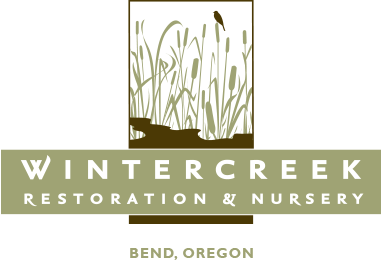Choosing Native Plants
Survey Summary
Rick Martinson
WinterCreek Nursery
Earlier this month we developed a brief survey to assess consumer’s values on consistency in native plant choices. The survey was created primarily in response to a recent article[1] in Hort Technology, a peer reviewed journal from the American Society for Horticultural Science. The article discusses release methods and marketing in the relatively new field of “Nativars”, the selection and propagation of native plants for specific phenotypic characteristics such as flower color, size, growth habit, or for specific qualities such as drought resistance expressed in an individual plant. The goal of these efforts is to expand consumer interest in native plants and increase the attractiveness and use of native plants in home horticulture. The idea is that native plants would be more marketable if they exhibited consistency in shape, color, size, and other features commonly desirable in urban landscapes.
For me, the effort to homogenize the inherent variability in native plant species is troubling. Many native plant landscapes are designed for resource savings, habitat quality, or the resilience of native plant communities. Each of those features depends on the genetic variability of native species. The ability of a landscape to survive and recover from drought, disturbance, disease, or pests is highly dependent on the plasticity of genetic variation, and much of that genetic variation is expressed through phenotypic properties. Propagating plants with the intent to decrease variability reduces the genetic adaptability of a population. This may have long-term consequences on naturally occurring populations of the same species in the same ecological region as the project in which nativars are installed, although literature explicitly addressing the genetic swamping potential of nativars is lacking.
Our survey addresses a more practical consideration; the preferences and values of consumers. It’s unclear if institutions promoting nativars evaluated consumer preference concerning the inconsistencies in native plants, or the reasons people choose native plants as the primary plant type for their landscapes. Those are the questions we targeted in our brief on-line survey.
We developed our survey through SurveyMonkey (surveymonkey.com) and released it on our nursery facebook page (https://www.facebook.com/Wintercreek-Nursery-357840746834/). The survey was “boosted” twice to illicit responses from three levels of separation from WinterCreek Nursery (the survey went to friends of friends of friends of WinterCreek). The survey included six questions about native plants, one question about the respondent’s location, and one open-ended question that allowed people to express additional thoughts. No personal information was gathered. We received a total of 124 responses from Oregon, Washington, California, and Texas.
Generally, consumers choose native plants for their ability to reduce water use, wildlife habitat value, and pollinator habitat value (Figure 1), and value genetic diversity over consistency in phenotypic characteristics (Figure 2). Flower shape, size, and color are less important than mature plant type and size, and consumers tend to choose plants based on apparent health of the plant at the nursery and the type of plant rather than consistency in appearance at maturity (Figure 3). Individual comments submitted throughout the survey suggest consumers have a broad understanding of the value of genetic diversity in native plants but desire more education on the subject, and consider variability an important factor in their choice of native plants as components of home landscapes.
Forty-eight comments were submitted by respondents (Table 1). The comments generally address five primary subjects: resource conservation, maintaining genetic variability, deer resistance, wildlife and pollinator habitat, and availability. These remarks reflect answers to questions in the survey and support survey results that indicate genetic variability in native plants is a desirable characteristic to consumers.
[1]Rupp, et al. 2018. Native and Adapted Plant Introduction for Low-water Landscaping. HortTechnology August 2018 28:431-435; doi:10.21273/HORTTECH04044-18
Figure 1: Responses to question 1: Why do you choose native plants? Columns indicate percentage of responses for each option (N=124). Water conservation and habitat value are rated significantly higher than other options. The high score of Conservation Ethic suggests a broad understanding of environmental values of native plants and their potential to contribute to overall resource conservation; not only water. “Other” responses ranged from valuing genetic diversity to deer resistance.
Figure 2: Weighted averages of responses for four questions ranking effect of consistency in plant characteristics on choice by consumers. Responses were ranked 1 through 5 from “Not at all important” to “Extremely important.” The four questions are: 1) How important is consistency in plant shape when choosing natives for your landscape? 2) How important is consistency in plant size when choosing natives for your landscape? 3) How important is genetic diversity in your decision to use native plants? 4) How important is consistency in flower color when choosing natives for your landscape? Results show that consumers value genetic diversity in native plants more than phenotypic characteristics commonly targeted in nativar propagation. (N=124)
Figure 3: Ranking of desirable plant characteristics by respondents (N=124). Results indicate that the type of plant and the apparent health of nursery stock are significantly more important to consumers than consistency in flower color or the mature shape of a native plant. However, general plant characteristics such as flowering period and mature size are also important considerations when choosing native plants, reflecting aesthetic elements common in urban landscape design.
Table 1: Forty-eight comments submitted by survey respondents. The remarks target five primary subjects: resource conservation, genetic diversity, pollinator and wildlife habitat, deer resistance, and plant availability.





